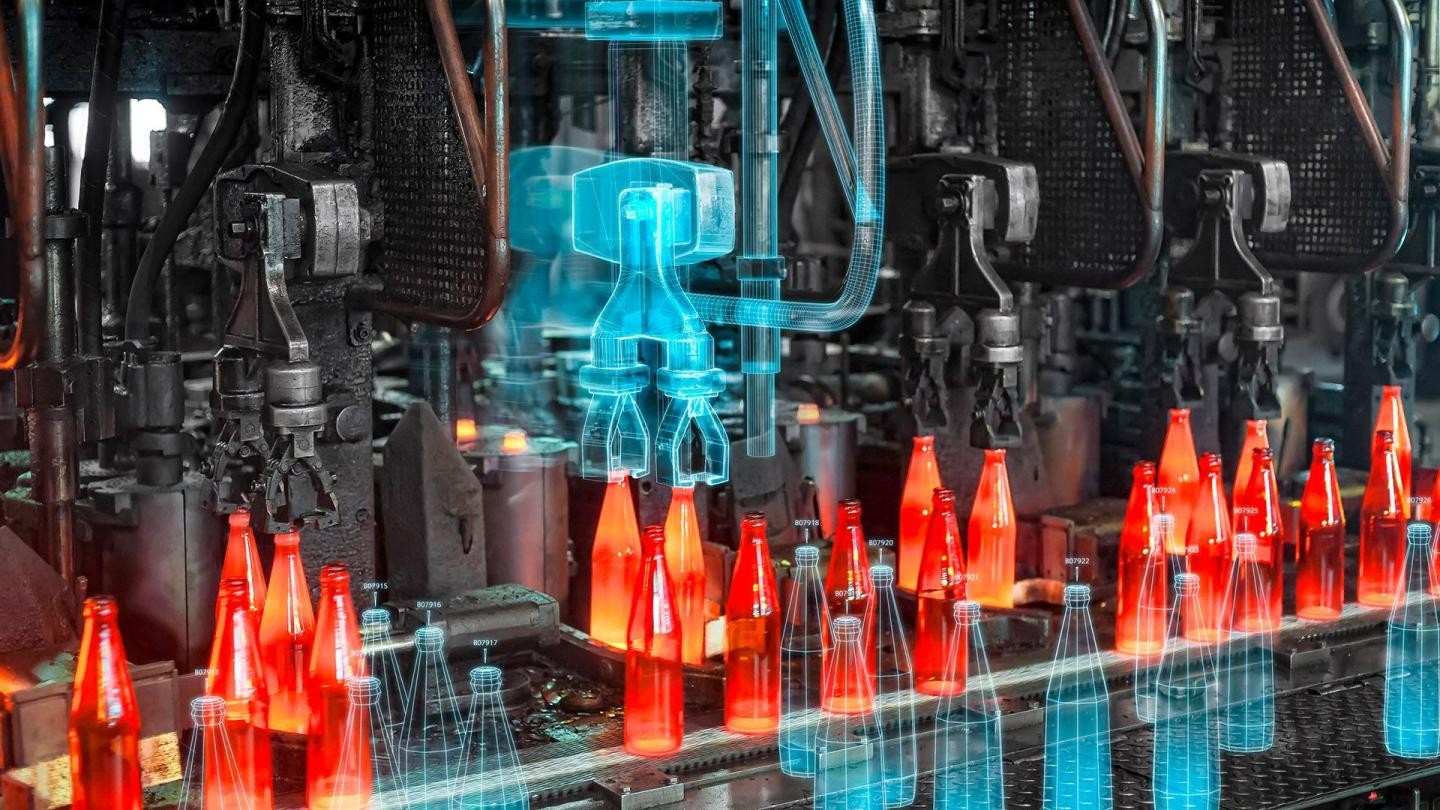8 months ago
What Are the Benefits of Smart Glass Forming Machines in Industrial Applications?
The Future of Glass Forming Machines: How Automation is Transforming the Industry
Glass forming machines play a crucial role in manufacturing various glass products, including bottles, containers, windows, and automotive components. With the rapid advancements in technology, automation is significantly transforming the glass manufacturing industry, enhancing efficiency, precision, and sustainability.
The integration of robotics, artificial intelligence (AI), and smart sensors into glass forming machines is shaping the future of this industry, enabling manufacturers to meet the growing demand for high-quality glass products while reducing costs and environmental impact.
The Evolution of Glass Forming Machines
According to a Glass Forming Machines Market report, the industry is expected to grow significantly in the coming years.
Traditionally, glass forming was a labor-intensive process that relied on manual operations, with workers handling molten glass using rudimentary tools. Over time, mechanical and pneumatic systems improved the process, leading to increased production rates and improved consistency. However, challenges such as human errors, inefficiencies, and material wastage remained prevalent.
With the advent of automation, the industry has undergone a dramatic transformation. Modern glass forming machines are now equipped with advanced robotics and AI-driven control systems that optimize operations, minimize errors, and enhance production capacity. These technological innovations have streamlined the entire glass manufacturing process, from raw material handling to final product inspection.
Get More Info: https://www.marketresearch...
Automation in Glass Forming: Key Technologies
Automation in glass forming machines is driven by several cutting-edge technologies, including robotics, AI, smart sensors, and the Industrial Internet of Things (IIoT). These technologies work together to improve precision, reduce manual intervention, and enhance productivity.
Robotics and AI Integration
Robotic systems have become an essential component of modern glass forming machines. Robots are used for tasks such as glass handling, shaping, and quality inspection. AI-powered algorithms enable machines to ****** yze data in real-time, adjusting parameters to optimize production efficiency and ensure product consistency. These AI-driven systems can predict and prevent defects by monitoring temperature fluctuations, pressure variations, and other critical factors during the forming process.
Smart Sensors and IoT Connectivity
Smart sensors play a vital role in automating glass forming machines by providing real-time data on temperature, pressure, and viscosity. These sensors help in maintaining optimal forming conditions, ensuring that each glass product meets stringent quality standards.
The Industrial Internet of Things (IIoT) enables seamless connectivity between machines, allowing manufacturers to monitor and control operations remotely. IIoT-integrated glass forming machines can collect and ****** yze vast amounts of data, helping operators make informed decisions and improve overall efficiency.
Computerized Numerical Control (CNC) Systems
CNC technology has significantly improved precision in glass forming. CNC-controlled machines allow manufacturers to program complex shapes and intricate designs with minimal errors. This technology is particularly useful in the production of high-end glass products, such as architectural glass panels and decorative glassware.
Benefits of Automation in Glass Forming
The adoption of automation in glass forming machines offers numerous advantages, including increased efficiency, reduced labor costs, improved product quality, and enhanced sustainability.
Increased Production Efficiency
Automation enables continuous production with minimal downtime, resulting in higher output rates. Automated machines can operate 24/7, significantly increasing production capacity compared to manual processes. Additionally, robotic systems perform tasks faster and with greater accuracy, reducing cycle times and increasing overall efficiency.
Enhanced Product Quality and Consistency
One of the major challenges in traditional glass forming is maintaining consistent product quality. Automation eliminates human errors and variations, ensuring uniformity in glass thickness, shape, and surface finish. AI-driven quality control systems detect defects in real-time, reducing waste and improving overall product reliability.
Reduced Labor Costs and Workplace Safety
The glass forming process involves working with high temperatures and molten materials, posing significant safety risks to workers. Automation reduces the need for manual intervention, minimizing exposure to hazardous conditions. This not onl
The Future of Glass Forming Machines: How Automation is Transforming the Industry
Glass forming machines play a crucial role in manufacturing various glass products, including bottles, containers, windows, and automotive components. With the rapid advancements in technology, automation is significantly transforming the glass manufacturing industry, enhancing efficiency, precision, and sustainability.
The integration of robotics, artificial intelligence (AI), and smart sensors into glass forming machines is shaping the future of this industry, enabling manufacturers to meet the growing demand for high-quality glass products while reducing costs and environmental impact.
The Evolution of Glass Forming Machines
According to a Glass Forming Machines Market report, the industry is expected to grow significantly in the coming years.
Traditionally, glass forming was a labor-intensive process that relied on manual operations, with workers handling molten glass using rudimentary tools. Over time, mechanical and pneumatic systems improved the process, leading to increased production rates and improved consistency. However, challenges such as human errors, inefficiencies, and material wastage remained prevalent.
With the advent of automation, the industry has undergone a dramatic transformation. Modern glass forming machines are now equipped with advanced robotics and AI-driven control systems that optimize operations, minimize errors, and enhance production capacity. These technological innovations have streamlined the entire glass manufacturing process, from raw material handling to final product inspection.
Get More Info: https://www.marketresearch...
Automation in Glass Forming: Key Technologies
Automation in glass forming machines is driven by several cutting-edge technologies, including robotics, AI, smart sensors, and the Industrial Internet of Things (IIoT). These technologies work together to improve precision, reduce manual intervention, and enhance productivity.
Robotics and AI Integration
Robotic systems have become an essential component of modern glass forming machines. Robots are used for tasks such as glass handling, shaping, and quality inspection. AI-powered algorithms enable machines to ****** yze data in real-time, adjusting parameters to optimize production efficiency and ensure product consistency. These AI-driven systems can predict and prevent defects by monitoring temperature fluctuations, pressure variations, and other critical factors during the forming process.
Smart Sensors and IoT Connectivity
Smart sensors play a vital role in automating glass forming machines by providing real-time data on temperature, pressure, and viscosity. These sensors help in maintaining optimal forming conditions, ensuring that each glass product meets stringent quality standards.
The Industrial Internet of Things (IIoT) enables seamless connectivity between machines, allowing manufacturers to monitor and control operations remotely. IIoT-integrated glass forming machines can collect and ****** yze vast amounts of data, helping operators make informed decisions and improve overall efficiency.
Computerized Numerical Control (CNC) Systems
CNC technology has significantly improved precision in glass forming. CNC-controlled machines allow manufacturers to program complex shapes and intricate designs with minimal errors. This technology is particularly useful in the production of high-end glass products, such as architectural glass panels and decorative glassware.
Benefits of Automation in Glass Forming
The adoption of automation in glass forming machines offers numerous advantages, including increased efficiency, reduced labor costs, improved product quality, and enhanced sustainability.
Increased Production Efficiency
Automation enables continuous production with minimal downtime, resulting in higher output rates. Automated machines can operate 24/7, significantly increasing production capacity compared to manual processes. Additionally, robotic systems perform tasks faster and with greater accuracy, reducing cycle times and increasing overall efficiency.
Enhanced Product Quality and Consistency
One of the major challenges in traditional glass forming is maintaining consistent product quality. Automation eliminates human errors and variations, ensuring uniformity in glass thickness, shape, and surface finish. AI-driven quality control systems detect defects in real-time, reducing waste and improving overall product reliability.
Reduced Labor Costs and Workplace Safety
The glass forming process involves working with high temperatures and molten materials, posing significant safety risks to workers. Automation reduces the need for manual intervention, minimizing exposure to hazardous conditions. This not onl



